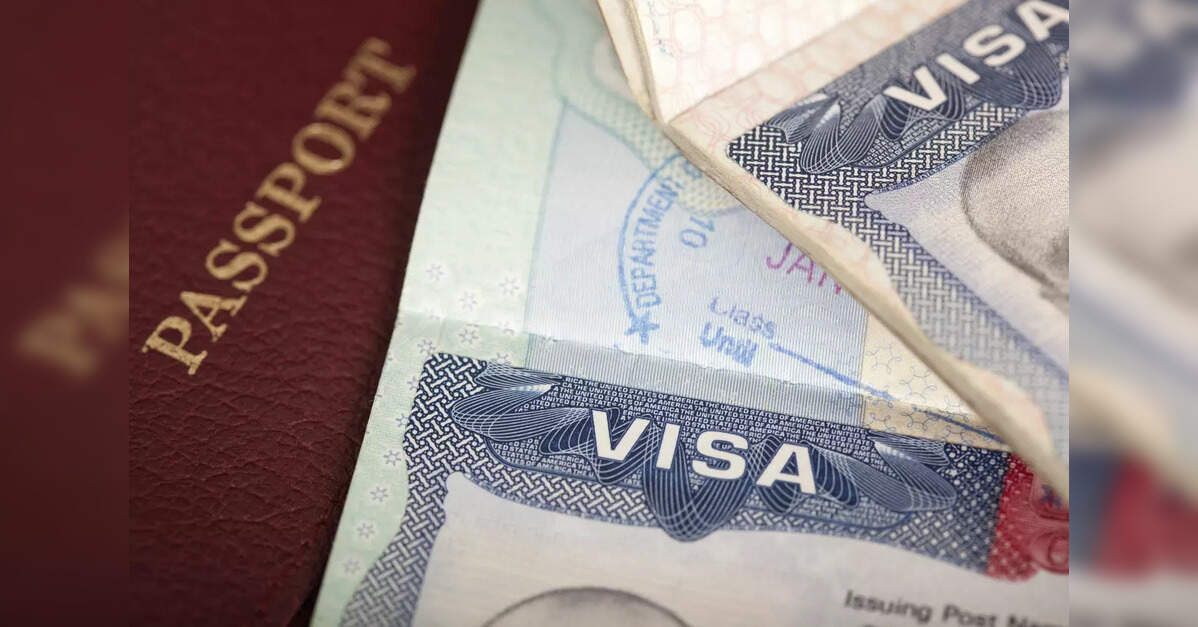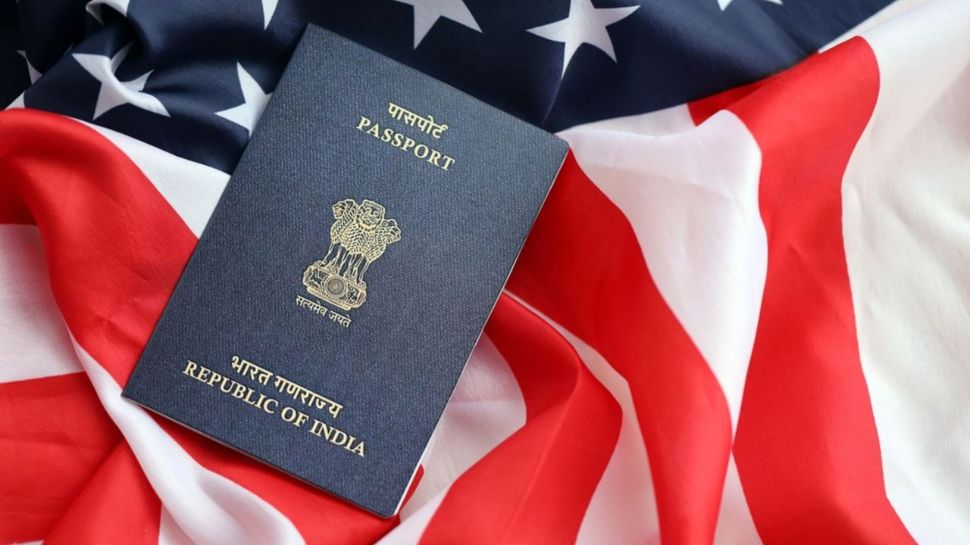Beginner’s Guide to US Visas For Indian Citizens
Wiki Article
Unlocking Opportunities: Necessary Information on United States Visas for Indian Citizens
Maneuvering the intricacies of united state visa alternatives is vital for Indian people aiming to explore opportunities in the United States. With numerous groups varying from temporary site visitor visas to pathways for long-term residency, recognizing the subtleties of each can significantly affect one's journey. This discussion will highlight important information, including application procedures and qualification standards, that can encourage individuals in their quest of brand-new experiences. As we unpack these important elements, the concern develops: what strategies can one utilize to enhance their possibilities of a successful application?Overview people Visa Types
When traversing the facility landscape people immigration, recognizing the different kinds of visas offered is necessary for Indian citizens seeking entry into the USA (Types Of US Visas). The United States migration system is primarily classified into two broad categories: immigrant visas and non-immigrant visasImmigrant visas are assigned for those meaning to live completely in the US. These include family-sponsored and employment-based visas, where applicants commonly need an enroller. Non-immigrant visas, on the various other hand, accommodate people looking for short-lived home, such as tourists, company visitors, and those traveling for specific objectives like job or study.
Within the non-immigrant category, several visa kinds exist, including B-1/ B-2 for company and tourism, H-1B for specialized professions, L-1 for intra-company transferees, and O-1 for people with phenomenal abilities. Each visa has unique qualification requirements and application processes, requiring extensive research study to identify the appropriate group.
Recognizing these categories is essential for Indian citizens, as it enables them to browse the application process better, ensuring they choose the appropriate visa kind to meet their certain demands and purposes. US Visas For Indian Citizens.
Student Visa Options
For Indian people aiming to research in the United States, trainee visas offer an important pathway to seek academic possibilities. The main visa categories for students are the F-1 and M-1 visas.The F-1 visa is assigned for academic trainees enrolled in a full time program at an accredited institution, such as universities and universities. This visa enables pupils to take part in on-campus employment and, under certain conditions, take part in optional sensible training (OPT) after completing their level, providing important work experience in their field.
Conversely, the M-1 visa is intended for employment or non-academic programs. It satisfies students going after technical or vocational training, permitting them to enlist in non-degree programs. M-1 visa owners might join functional training, but it is normally a lot more minimal compared to the F-1 classification.
To obtain a student visa, applicants have to safeguard admission to a united state organization, get a Kind I-20, and demonstrate monetary capability to sustain their education and living expenses. Understanding these visa choices is substantial for Indian people intending to begin their instructional trip in the USA.
Job Visa Categories
Numerous Indian people looking for employment possibility in the USA may think about numerous copyright classifications customized to different professional needs and certifications. The most popular copyright is the H-1B visa, created for knowledgeable employees in specialized line of work calling for a greater education level or its comparable. It allows united state companies to momentarily employ international employees, with a cap on the number of visas released annually.One more important category is the L-1 visa, which assists in the transfer of staff members within multinational firms. The L-1A visa is for supervisors and executives, while the L-1B visa is for workers with specialized understanding.
The O-1 visa provides to people with remarkable capabilities in their field, consisting of scientific research, arts, or organization. For farming or seasonal work, the H-2A and H-2B visas are available, allowing companies to employ foreign employees for short-lived positions.
Family-Based Migration
Family-based migration provides a path for united state residents and lawful irreversible locals to reunite with their loved ones from India. This immigration category is essential for preserving familial bonds and facilitating the assimilation of relative into American culture. U.S. residents can request for immediate loved ones, including partners, youngsters, and moms and dads, without dealing with yearly limitations on visas. This expedited process considerably decreases waiting times for these close household links.On the other hand, legal long-term homeowners might fund spouses and unmarried kids, but they are subject to annual caps, leading to much longer wait times. The family-sponsored migration system is split right into 2 main groups: immediate family members and family choice categories. The former consists of those who have a straight connection with a united state person, while the latter encompasses farther loved ones, such as siblings and married kids of citizens, and children of legal irreversible locals.
For Indian people looking for family-based immigration, comprehending the subtleties of this system is essential. Appropriate documents and adherence to application procedures are essential for successful sponsorship. By steering via these complexities, family members can function towards rejoining and constructing their lives with each other in the USA.
Irreversible Residency Process
The process of getting long-term residency in the USA includes several vital visa categories customized for Indian people. Recognizing the application steps, including required documentation and eligibility standards, is crucial for an effective end result. Furthermore, potential candidates need to understand the anticipated timeline and particular demands related to each classification.Visa Categories Summary
While going across the intricacies of the united state migration system, Indian residents looking for permanent residency has to acquaint themselves with different visa groups tailored to different circumstances. The primary path for irreversible residency is via employment-based visas, which are classified into several preferences, including EB-1 for people with amazing abilities, EB-2 for experts holding postgraduate degrees, and EB-3 for skilled employees. Each classification has details eligibility needs and processing times.
Variety visas, although limited in number, offer a possibility for people from underrepresented nations to request permanent residency with a lotto game system. In addition, humanitarian options such as asylum and evacuee status offer paths for those dealing with mistreatment.
Comprehending these visa groups is crucial for Indian residents, as they significantly affect the technique for getting irreversible residency in the United States. Each classification's nuances and requirements necessitate mindful factor to consider to line up with individual conditions and objectives.
Application Process Steps
Steering the application procedure for irreversible residency in the United States includes numerous key actions that need to be diligently followed to ensure an effective outcome. The journey normally starts with figuring out the ideal migration category, such as employment-based or family-sponsored visas. Candidates need to gather vital paperwork, consisting of evidence of eligibility, monetary statements, and individual recognition.Once the group is identified, the following action is to submit the Type I-130 (Application for Alien Family Member) or Kind I-140 (Immigrant Petition for Alien Worker), depending upon the basis of the application. Adhering to the approval of the request, candidates will certainly require to finish the National Visa Facility (NVC) handling by sending the required charges and kinds.
Next, the applicant needs to go through a medical checkup and get cops clearance certifications. When these are finished, a meeting will certainly be set up at the united state consular office or consular office. It is vital to prepare thoroughly for this interview, as it can substantially impact the decision on the application. Upon authorization, the applicant will certainly obtain their visa, granting them permanent residency in the United States.
Timeline and Requirements
Charting the timeline and needs for obtaining irreversible residency in the USA is vital for Indian residents seeking to develop a long-term presence. The procedure primarily rests on employment-based or family-sponsored paths, each with details requirements and timelines.For employment-based immigration, the procedure generally starts with a labor qualification, which can take a number of months. Once approved, the company files a Form I-140, Immigrant Application for Alien Employee, which can take an added six months to a year, depending on the handling facility. Following I-140 authorization, candidates may need to await their priority date to come to be present, which can differ considerably based upon the candidate's category and country of origin.
For family-sponsored migration, united state people can petition for instant family members, which generally leads to faster handling. Other household groups may include longer wait times due to annual caps.
Application Procedures
Comprehending the application treatments for United States visas is crucial for Indian residents looking for access into the USA. How To Get US Visa From India. This section will certainly supply a summary of various visa classifications and outline the detailed process for applying. By following these guidelines, candidates can browse the complexities of the visa effectivelyVisa Categories Review
Maneuvering the different visa groups offered to Indian people can be a complex procedure, but it is essential for those seeking to take a trip, function, or study in the United States. The united state visa system is categorized largely into non-immigrant and immigrant visas, each serving distinct objectives.Non-immigrant visas, such as B-1/ B-2 for business and tourist, F-1 for academic research study, and H-1B for specialized employment, allow temporary keeps. Candidates should demonstrate their intent to return to India after their check out.
On the other hand, immigrant visas, website consisting of family-sponsored and employment-based groups, give a path to permanent residency. These visas typically require sponsorship from a relative or company in the united state, together with a rigorous application process.
)
Step-by-Step Process
Typically, the application process for united state visas includes numerous important actions that applicants have to thoroughly follow to ensure a smooth experience. The primary step is to establish the appropriate visa classification based on the objective of traveling, such as job, study, or tourist. As soon as the classification is recognized, applicants have to finish the online DS-160 form, offering accurate individual details and traveling information.After submitting the DS-160, candidates ought to pay the visa cost, which varies by visa kind. Next off, arrange a visit for a visa interview at the local united state Consular office or Consulate. Types Of US Visas. It is important to plan for the interview by celebration needed files, including a legitimate visa, visa confirmation, charge repayment invoice, and any type of sustaining documentation details to the visa classification
On the day of the interview, arrive punctually and dress appropriately. Throughout the interview, be prepared to answer concerns concerning your travel purposes, economic security, and connections to India. If authorized, the visa will certainly be marked in the visa, permitting for traveling to the United States. Following these actions ensures an efficient and reliable copyright process for Indian residents.
Tips for an Effective Application

Guarantee that all types are completed accurately and truthfully. Little mistakes or omissions can result in hold-ups or even rejections. It is a good idea to collect all necessary supporting records, including financial statements, work letters, and evidence of connections to India, which demonstrate your intent to return post-visit.
Plan for your visa interview by practicing responses to usual questions associated with your travel strategies and history - US Visa Categories India. Self-confidence and quality can greatly influence the policeman's impression. Take into consideration seeking help from reliable immigration professionals if you feel overwhelmed.
Frequently Asked Inquiries
What Are the Handling Times for United States Visa Applications?
Handling times for united state visa can differ substantially based upon the visa kind, application quantity, and the candidate's location - Types Of US Visas. Generally, candidates need to anticipate a processing period varying from a couple of weeks to a number of monthsCan I Adjustment My Visa Condition While in the United States?
Yes, individuals can change their visa condition while in the USA, supplied they meet eligibility requirements and follow correct procedures. It is important to file the suitable application with U.S. Citizenship and Immigration Services (USCIS)Exist Age Limits for US Visa Candidates?
There are usually no certain age limitations for united state visa candidates; nevertheless, certain visa categories might have age-related eligibility criteria. It is essential to evaluate the needs for every visa type to ensure compliance.What Prevail Factors copyright Denial?
Usual factors copyright rejection consist of inadequate economic resources, failing to show connections to the home nation, incomplete application, lack of correct documentation, previous immigration violations, and failure to meet qualification standards for the details visa group.How Can I Appeal a Visa Denial Choice?
To appeal a visa rejection, assess the consular police officer's factors, collect sustaining documents, and send an official attract the appropriate authority, guaranteeing to stick to defined timelines and step-by-step needs for the appeal process.Report this wiki page